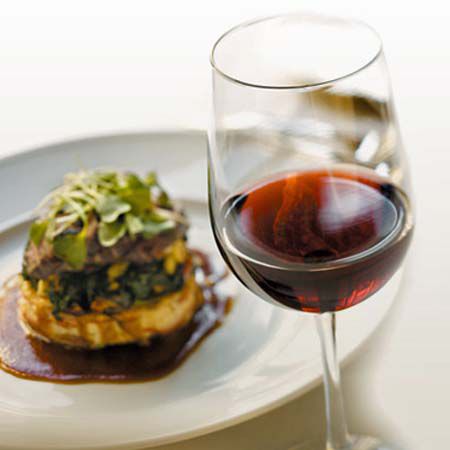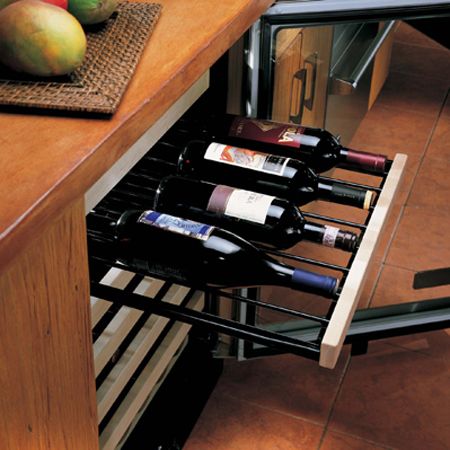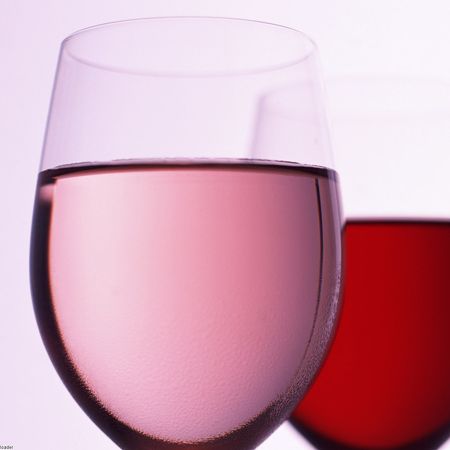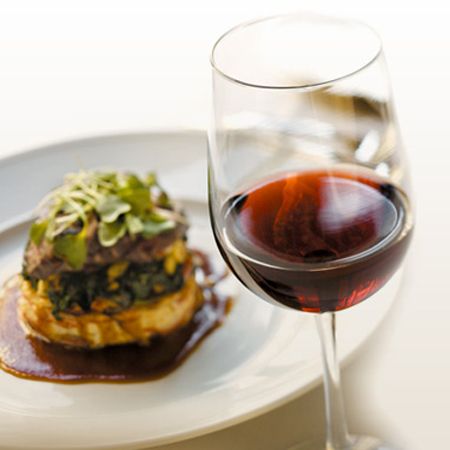Pairing Wine with Food: Considering Body and Texture

As the American culinary stage has gained sophistication in recent years, selecting an appropriate wine for a meal has deservedly become a prominent consideration. Accordingly, a significant portion of the future content of Viking Life will include this topic. Our goal will be to convey an understanding of the interplay of certain characteristics of wine and food, and not just to set forth a laundry list of what goes with what. Reducing appropriate pairings to memory is a chore, while possessing a working knowledge of the subject is very satisfying. Let’s begin by establishing a premise about why this is an important issue and the extent to which it matters.
To be succinct, the threshold objective in wine/food pairing is to prevent each from destroying the other. It is not unlike the physician’s creed, “First, do no harm.” Thereafter, the motivation is to serve a wine that will enhance the flavors and textures in the food, while remaining flavorful and lively itself. The underlying and factual principle here is that the flavors and textures of wine and food will always affect those of the other. The goal is to have that effect be positive, and at its best, utterly scintillating.
Generally, wine is subordinate to the food choice for most people, and is considered in the context of a meal that has already been planned, or ordered in the case of dining out. The wine plays several roles: (1) it should be delicious and satisfying; (2) it should refresh the palate between bites, preventing the food from tasting monotonous; (3) it should lift the spirits of the participants; and, (4) it should do these things while enabling the food to taste its best. This scenario fails most profoundly when either the food or the wine simply dominates the other, completely suppressing some of its facets. How does this happen?
It is largely a matter of certain characteristics of the wine reacting with corresponding elements of the food. The most frequent culprits are body and texture. With a few exceptions, a reliable tenet is to match heavier foods with full-bodied wines and delicate dishes with light-bodied wines – big with big, light with light, and gradations in between. However, it is not necessary to be compulsively precise about this middle ground. The body and texture of the wine, if substantially greater and more intense than that of the food, will overwhelm the important attributes of the food, including its flavors. All of those wonderful ingredients painstakingly prepared and combined are muted, leaving a bland, uninteresting dish. The diner is usually oblivious to the cause of his disappointment. He’s not repulsed by the meal; he just loses interest in it, diverting his attention elsewhere.
Regarding texture, the need for balance between the wine and food results mainly from their respective levels of acidity. We usually don’t think about acid as such. Instead, we sense it in terms of crispness, freshness, or liveliness. Without an adequate amount of acid, however, a wine will normally taste flat or flabby. It lacks the vibrancy which is essential to a satisfying wine and to its interaction with food. The acidic component is usually more evident in white wines, particularly Sauvignon Blanc and Riesling. But it is also critical to red wines, where it is frequently obscured somewhat by higher concentrations of flavors, tannins, and sometimes alcohol. Within the family of reds, the acid in a Pinot Noir is usually more pronounced than in a Cabernet Sauvignon because the latter has more tannin and body, as well as bigger flavors. Also, as with the spectrum of apples, for example, each grape varietal generates a different level of acidity. Nevertheless, if the wine is in balance it should have enough acid to perform well if it is not overmatched by the food.
The acidic component not only gives life to the wine, it also cleans and refreshes the palate throughout the meal. This is particularly pleasing in a pairing of contrasts, using a crisp wine to cut through a rich dish, providing both a counterpoint to the food’s texture and a refreshing brush of the palate. This is the principle exception to the rule of choosing a wine of similar body and texture to that of the food. Seafood and chicken preparations that are rich in texture, whether inherently or by the addition of a sauce, will often pair beautifully with a lighter-bodied, zesty wine. A Riesling Kabinett or Spatlese is exceptionally adept in this combination. It has a crisp structure, but a core of rich flavor that can stand up to that of the dish. Either a Sauvignon Blanc or Pinot Gris can serve this role well, but will usually be subordinate to the food; it will enhance the taste of the food and be refreshing, but some of its own taste attributes will be suppressed by the texture and flavor of the food. Some California Sauvignon Blancs (Araujo, Rudd and Selene come to mind) have enough depth of flavor to hold their own with a creamy, flavorful sauce.
Chardonnay presents a different combination altogether, of course. Its texture and body complements, rather than contrasts with, rich foods. Those produced in Burgundy, with its cool climate, usually have more acid and minerality, and less lushness, than those from California, although certain vintners in California (Ramey Wine Cellars and Chateau Montelena, for example) produce Chardonnays in a Burgundian style. A good Chardonnay can be a sensational partner for the succulence of scallops, lobster, or shrimp, but it needs an adequate component of acid to keep the taste buds alive.
A bigger problem arises when the food is too acidic for the wine. In layman’s terms, as the acid from both sources is repeatedly sensed by the brain, our perception of the crisp acidity is significantly reduced. If the acidity of the food is greater than that of the wine, the wine seemingly becomes flat, out of balance, and dull. In this circumstance, the food may taste fine, but the wine is lost, leaving the full culinary experience far from complete. To prove the point, pair a California chardonnay you like (not a very expensive one, please) with a dish as seemingly innocuous as veal or chicken piccata, which includes the sourness of lemon and capers. Taste the chardonnay before and after tasting the food. Its taste will change and seem limp next to the piccata. An easier test is to simply squeeze some lemon juice into a small amount of water; taste the wine before and after taking a swallow of the lemon water. You’ll see the point.
Accordingly, always choose a wine with sufficient acid relative to the food. For particularly acidic meat dishes, such as those with a fresh tomato sauce, stick with a Chianti Classico or Barbera (from Italy’s Piedmont), which are increasingly available and reasonably priced in retail shops. At the higher end of the scale for whites are Sauvignon Blanc (especially from Sancerre and Pouilly Fume’ in the Loire Valley), Riesling (Germany and Alsace, in particular), Pinot Gris, Albarino, and of course, Champagne.
Two particularly complicating ingredients, when considering acidity, are tomatoes and vinegar. In the case of tomatoes, unless they are cooked to the point of substantial caramelization, in a braised dish for instance, just accept that the wine is going to be deflated by the dish and go with something simple and moderately priced. To a further extreme, a strong dose of vinegar, such as in salad dressing, is a death knell for any wine. If you are able to substitute lemon, it will be a major improvement.
Always keep in mind that an essential aspect of wine pairing is taking the entire meal into account. This consists of the method of preparation and the ingredients. With red snapper prepared in a simple pan sauté, almost any white varietal will work. Ratchet up the flavors with some pungent ingredients, then move away from a richly-textured varietal, such as Chardonnay or Chenin Blanc, to one with more evident acidity. With respect to side dishes, to protect the wine as well as a light fish dish, avoid items that are too sharp, such as a relish with raw onions or tomatoes.
All of this may sound a bit complicated, but it really isn’t. In pairing wine with food, approximation is usually the goal, not perfection.
RECENT POSTS IN Food and Wine Articles


